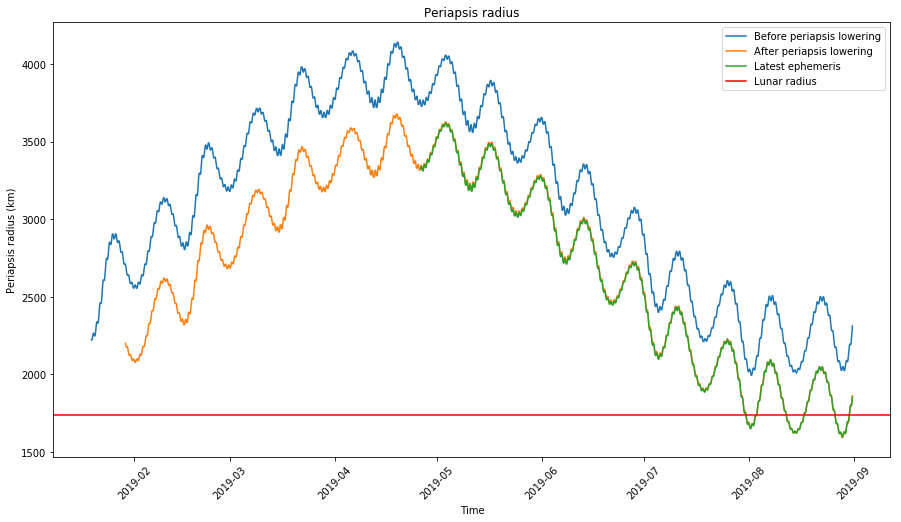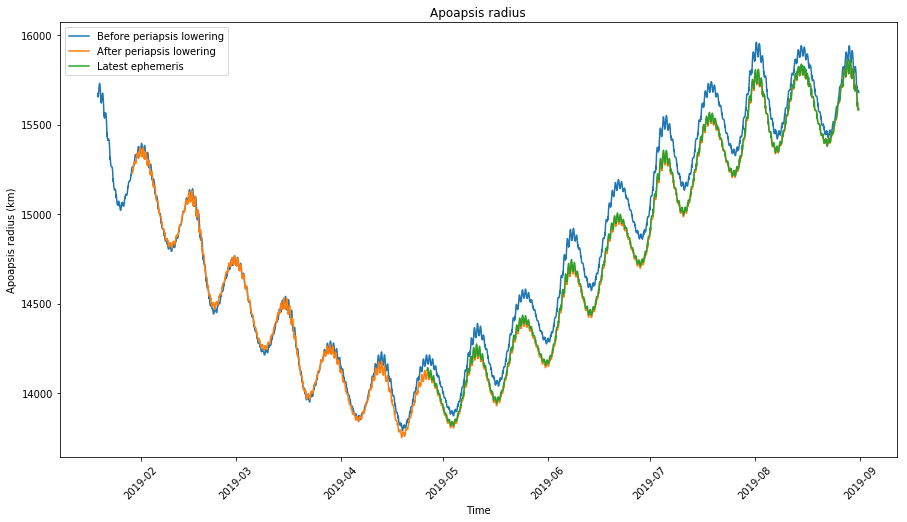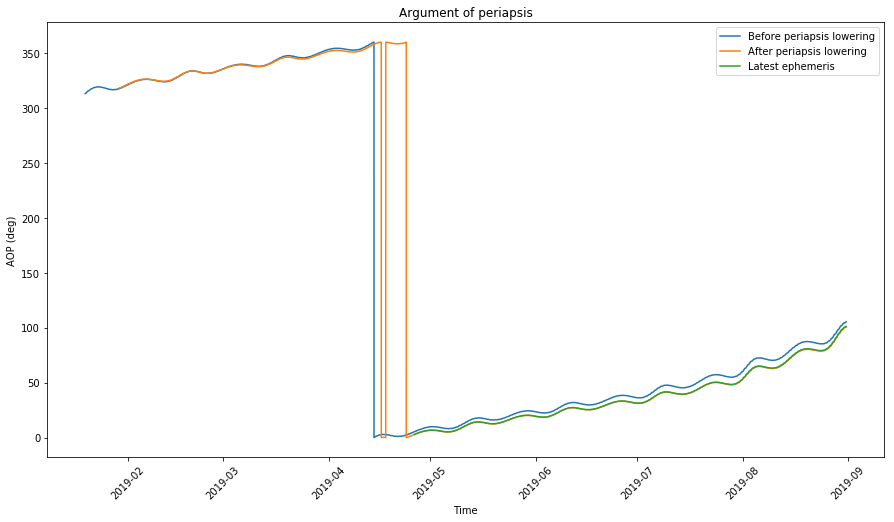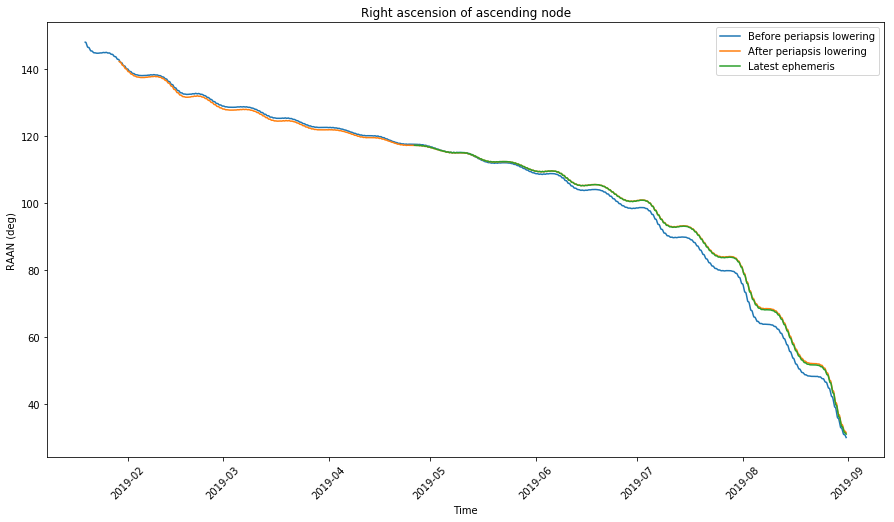On January 24, the periapsis of the lunar orbit of DSLWP-B was lowered approximately by 500km, so that orbital perturbations would eventually force the satellite to collide with the Moon. This was done to put an end to the mission and to avoid leaving debris in orbit. It is expected that the collision will happen at the end of July, so there are only three months left now for the DSLWP-B mission. Here I look at the details of the deorbit.
The figure below shows the periapsis of the orbit, in comparison with the lunar radius. The trace in blue was generated propagating the tracking file for 2019-01-19, which was the one immediately before the deorbit manoeuvre. The orange trace uses the tracking file for 2019-01-29, which is the one immediately after the deorbit manoeuvre. Finally, the green trace is based on the 2019-04-26 tracking file, which is the latest one available.

Here we note two things. First, that the periapsis lowering manoeuvre now places DSLWP-B in a collision trajectory, while the original trajectory would stay above the Moon surface. Second, that the ephemeris just after the manoeuvre and the latest ephemeris, while being separated by three months, show very similar behaviour. This means that the orbit modeling is quite good and that we can already predict the moment of the collision with good precision.
Zooming in the graph above around the end of July shows that the collision is expected on July 31.

The figure below shows the apoapsis radius. Note that the periapsis change manoeuvre didn’t change the apoapsis noticeably, as expected.

Regarding the eccentricity of the orbit, we see that it has increased, as expected from a periapsis lowering.

The increase in eccentricity has made the secular perturbations of the argument of periapsis to increase at a slightly slower rate.

This also causes small changes in the evolution of the inclination and ascending node, as seen in the figures below.


The long term evolution of the orbit of DSLWP-B has already been treated in this post, where I simulated the orbit before the periapsis lowering and showed that it was a long lasting orbit, and this post, which is an in-depth study of the perturbations of the elliptical lunar orbit caused by the Earth’s gravity. In particular, I showed that the secular perturbations of the eccentricity (and hence, of the periapsis) follow approximately a sinusoidal curve with a period of 7.87 months. This fact is what has been used to program the deorbit of DSLWP-B by making a manoeuvre 7 months in advance.
As the mission is coming now to an end, Wei Mingchuan BG2BHC, Cees Bassa, Tammo Jan Dijkema, Reinhard Kuehn DK5LA and I are thinking about more experiments to perform in the last months of the mission. We are open to suggestions and ideas.
The plots in this post have been done in this Jupyter notebook.
7 comments